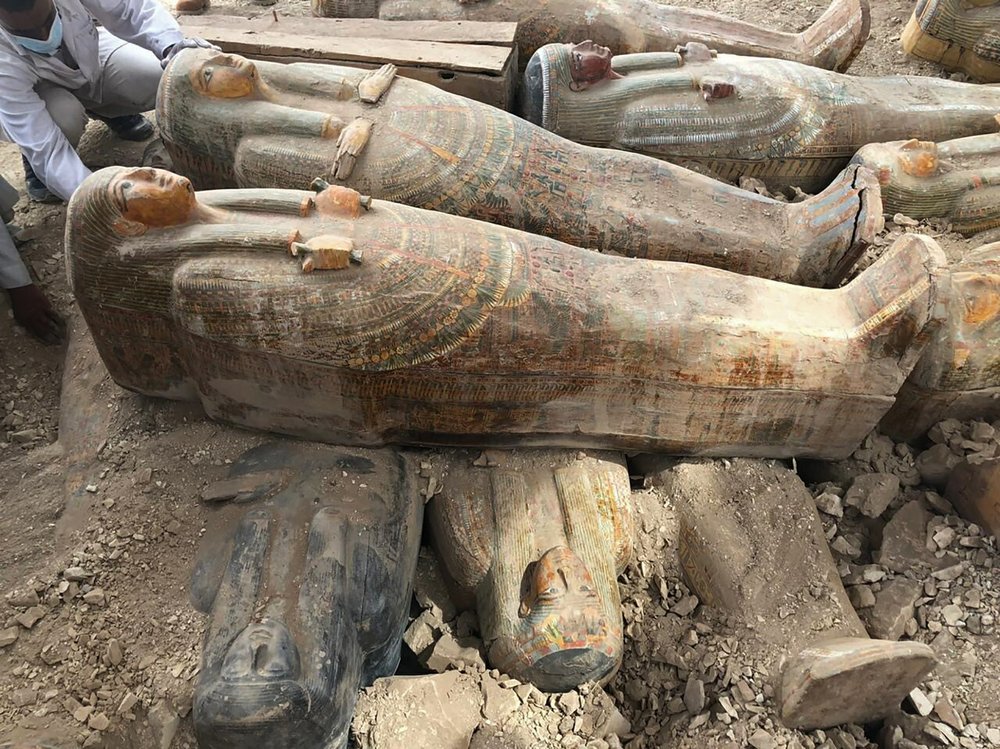
Archaeologists discover perfectly preserved mummies in 3,000 year-old coffins

Egyptian authorities on Saturday unveiled the contents of 30 ancient wooden coffins discovered on the Nile River’s west bank near Luxor by Egyptian archaeologists.
Scientists say resting inside the coffins were perfectly preserved mummies.
Adorned with delicate inscriptions and paintings, they were discovered in the Asasif Necropolis and are considered the most significant find of their type in more than 100 years.
“It is the first large human coffin cache ever discovered since the end of the 19th century,” the Egyptian Antiquities Minister Khaled El-Enany said during a ceremony in Luxor. He added that the 3,000-year-old coffins were “exceptionally painted and preserved.”
The coffins contained the mummified remains of 23 adult men, five women as well as two children, explained Mr. El-Enany.
Their gender can be distinguished by the shape of their hands, said Mostafa Waziri, secretary-general of the Supreme Council of Antiquities. He explained that ancient women were buried with their hands open while men’s hands were closed in fists.
Archaeologists opened the coffins of a man and a woman, both wrapped in cloth while seemingly well preserved with the outer wrappings still intact completely covering their faces and bodies.
According to archaeologist Zahi Hawass, finding coffins belonging to a child is a rare occurrence. The discovery of two has caused tremendous interest “worldwide,” he said.
Further excavations are underway in the necropolis which includes tombs dating back to the Middle, New Kingdom and Late Periods (1994 B.C to 332 B.C).
The coffins will be moved to the Grand Egyptian Museum being built near the famed Giza Pyramids in Cairo in November.
Early this month, two archaeological discoveries in Luxor were revealed which also included an industrial zone at the city’s West Valley also known as the Valley of Monkeys.






